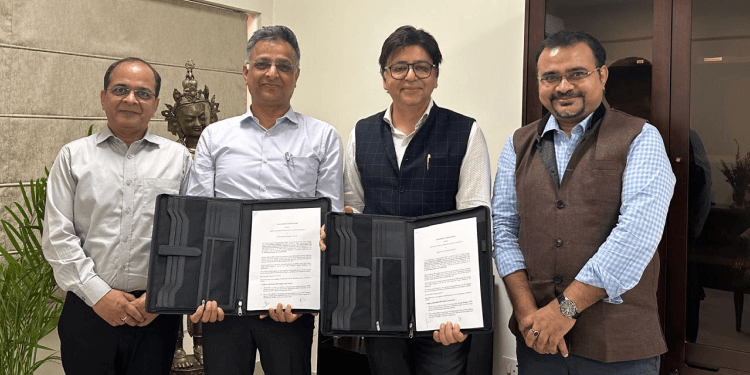Benefits, Challenges Of Bankruptcy Code

Benefits, Challenges Of Bankruptcy Code
India is one of the youngest republics in the world, having ample degree of entrepreneurial dynamism and in the process of laying the foundations of a mature market economy. Thousands of Indian corporates have become multinationals and Indian financial investors have started lending to overseas persons. Some business failures are inevitable in markets and in such cases the regulatory system should provide for negotiation for resolution, else liquidation. The insolvency and bankruptcy in India so far has been considered as a domestic issue. Further, the current bankruptcy and insolvency regulatory framework is fragmented and multi-layered.
In his Budget Speech of 2014-15, the Hon’ble Finance Minister had announced the development of an effective Bankruptcy Code for easy exit. Following the above announcement, the Viswanathan Committee was set up on 22 August 2014 to study the corporate bankruptcy legal framework in India. Commendably, within a short span of time a comprehensive Bankruptcy & Insolvency Code 2016 (The Code) has got the president’s assent. The code is single platform providing for insolvency of individuals, partnership firms, corporate and LLPs. The Code proposes to repeal the Presidency Towns Insolvency Act, 1909 and Provincial Insolvency Act, 1920 as well as amend 11 legislations, including the Companies Act 2013, The Securitisation and Reconstruction of Financial Assets and Enforcement of Security Interest Act 2002, The Limited Liability Partnership Act 2008, etc.
The policy-related aspects are being addressed in the Code and the procedural aspects will be dealt under delegated legislations for flexibility. The Code has identified the delay in the insolvency and bankruptcy resolution process in the current regulatory system. Under the current system, considerable time is lost in obtaining credit information. Another source of delay is multi-layered adjudicating mechanism. The Code provides for Corporation Insolvency Resolution process within a period of 180 days which can be extended to 90 more days once.
Accordingly the Viswanathan Committee recommended a single code with two adjudicating authorities. National Company Law Tribunal is adjudicating authority for corporate insolvencies and insolvency of LLPs and Debt Recover Tribunal is adjudicating authority for individual insolvencies and insolvency of partnership firms. Having a single code for individual insolvencies and corporate insolvencies has its own advantage. This has two distinct advantages in improving the insolvency and bankruptcy framework in India. The first is that all the provisions in one Code will allow for higher legal clarity when there arises any question of insolvency or bankruptcy. The second is that a common insolvency and bankruptcy framework for individual and enterprise will enable more coherent policies when the two interact. For example, it is common practice that Indian banks take a personal guarantee from the firms’ promoter when they enter into a loan with the firm. At present, there are a separate set of provisions that guide recovery on the loan to the firm and on the personal guarantee to the promoter. Under a common Code, the resolution can be synchronous, less costly and help more efficient recovery.
In fact, in 1999, Justice Eradi Committee had identified 473 winding-up cases that were pending for more than 25 years. Moreover, the analysis of companies under liquidation as on 31 October 2015, furnished by the Department of Financial Services, indicates that there were total of 5141 winding up cases pending out of which 1,479 pending winding-up cases for more than 20 years, indicating relative triple-time increase in data of winding-up cases still pending. The causes may be due to delays in deciding on the viability of businesses, tactics employed by company promoters to delay reorganisation or attempts to sell off assets, changes of management or litigation that goes on endlessly – consequently, the drag on new business units, jobs, income generation and economic growth can be significant.
As per the data of Ministry of Corporate Affairs there are more than 34000 companies are registered in Rajasthan. The policies of Rajasthan Government are supportive for revival of sick industries. An example for this regulatory initiative is “The Rajasthan Sick Micro & Small Enterprises (Revival and Rehabilitation) Scheme, 2015 ” The scheme shall be applicable to any Micro or Small Enterprise in the manufacturing sector not covered under the provisions of the Sick Industrial Companies (SpecialProvision) Act, 1985 which has been identified by the principal loaning bank as sick enterprise and found viable / potentially viable for revival.
The gelling of Central and State policy initiatives impacts visible difference in the state. The benefit that may arise due to implementation of this code helps the company to come out of distress in number of ways. The lack of rapid resolution of corporate distress leads to slow multi-year processes of industrial disease. Bankruptcy reform would allow a faster process through which society would put capital and labour to work in a business, and rapidly change course when that business does not work.
The present frameworks do not allow for the possibility of protecting the firm as a going concern while protecting the cash flows of secured creditors. Further this Code brings the concept of financial and operational creditors. It enables operational creditors including workmen to initiation corporate insolvency resolution process, though it does not give any voting right to such operational creditor to vote for the resolution plan.
The Code introduces “information utilities’ that help in facilitating credit information in the insolvency process that makes it faster. The code also introduces a Regulator Insolvency and Bankruptcy Board of India to govern the insolvency process and insolvency professionals who are instrumental for implementation of insolvency resolution plan. The insolvency professionals are also regulated by Insolvency Professional Agencies Registered with Insolvency and Bankruptcy Board of India.
The Code is a new generation law and requires capacity building of the professionals who would emerge as insolvency professionals. It also requires capacity building and infrastructure building of adjudicating authorities i.e National Company Law Tribunal and Debt Recovery Tribunal to address the forthcoming challenges.





